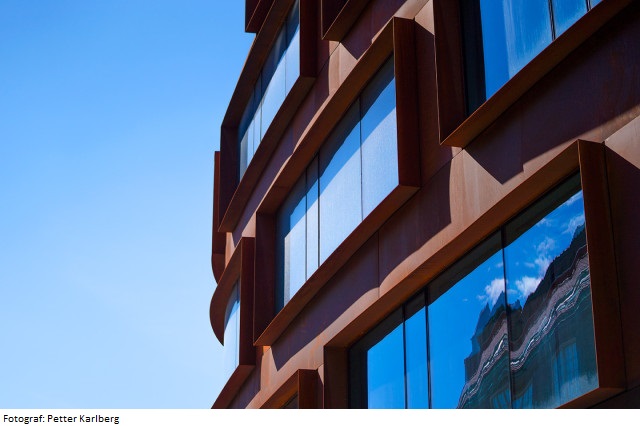A42P1B Design Process - Studio 4:1 12.0 credits
This course has been discontinued.
Last planned examination: Spring 2022
Decision to discontinue this course:
No information inserted
Content and learning outcomes
Course contents
When faced with the discussion about “real” and “virtual” architecture one encounters many different traces. One is leading towards a way of addressing architecture as a result from various “forces” or “powers”, where the constructed space is understood as something that manifests the predominating one. As a consequence, architects and theorists have been using the idea of the virtual and the network as a tool to resist powers or at least make the powers in question visible; to the beholder, but also to the producing architects. Terms like “open source” and “share ware”, borrowed from computer science, has been popular in the field of visual arts as well as in architecture. Production, collaboration, community, peer-to-peer, have been buzzwords in recent theory and practice. Traditionally, projects at school usually mimic the way work is being done in architectural offices. What is being judged is how we imagine the finished result: Is the spatial organization interesting? Will the construction work? And so on. In this course we will try and push the projects to include the whole procedure of architectural production, from concept all the way to realisation, both on- and offline. This might sound like a minor questions but it actually proposes new modes of production.
Intended learning outcomes
Production of Architecture: Unreal
Overall goals
The course is part of the Design Process Studio which aim is to develop new tools and methods for architectural design, and to create new forms of space.
2. The course/project goal is to increase the student's knowledge in this area/field and skills/knowledge in the field of architecture in general. The students will enter the project with varying degrees of knowledge/skills and will subsequently end up at different levels at the end of the course/project.
3. The individual student must show an increase in the particular skills/knowledge offered in the studio and in the field of architecture in general.
Course goals
1. The course aim to increase knowledge about how methods and tools to represent architecture also inform and influence the production of architecture and the understanding of space.
2. At the completion of the course, each student should be able to demonstrate developed practical skills and an extended knowledge in relation to the studio program and towards the practise of architecture as a whole.
Literature and preparations
Specific prerequisites
Bachelor’s Degree, or an equivalent level, within the field of Architecture.
Recommended prerequisites
Bachelor’s Degree, or an equivalent level, within the field of Architecture.
Equipment
Lap-top
Literature
(Autumn projects)
Space Time Play – Computer games, Architecture and Urbanism: The Next Level
Friedrich von Borries, Steffen P. Waltz, Matthias Böttger
Examination and completion
If the course is discontinued, students may request to be examined during the following two academic years.
Grading scale
Examination
- PRO1 - Project part 1, 9.0 credits, grading scale: P, F
- PRO2 - Project part 2, 3.0 credits, grading scale: P, F
Based on recommendation from KTH’s coordinator for disabilities, the examiner will decide how to adapt an examination for students with documented disability.
The examiner may apply another examination format when re-examining individual students.
The course consists of two parts; a fulfilled and delivered project work (9 credits) and a passed final assessment (3 credits). There is at least one intermediate assessment during the course.
Other requirements for final grade
a) Presentation requirements
Presentation requirements will be handed out at the start of the course.
b) Examination
80% attendance. Active participation in lectures, tutorials, and seminars etc. Passed intermediate and final assessments. Compulsory attendance during the assessment reviews.
Completion: The project work shall be delivered and, if necessary, reworked within the set time limit. See general directions.
(Overall principle: Autumn term projects must be approved during the following Spring term: Spring term projects must be approved before the start of the following Autumn term. The reworked projects must be delivered at least one week before the time limit.)
The project work is to be documented in a portfolio, including drawings, analysis and models. The work process shall be legible.
Opportunity to complete the requirements via supplementary examination
Opportunity to raise an approved grade via renewed examination
Examiner
Ethical approach
- All members of a group are responsible for the group's work.
- In any assessment, every student shall honestly disclose any help received and sources used.
- In an oral assessment, every student shall be able to present and answer questions about the entire assignment and solution.
Further information
Course room in Canvas
Offered by
Main field of study
Education cycle
Add-on studies
Supplementary information
Incoming exchange students within an architecture agreement can select this course.
No other exchange students are allowed to select this course.